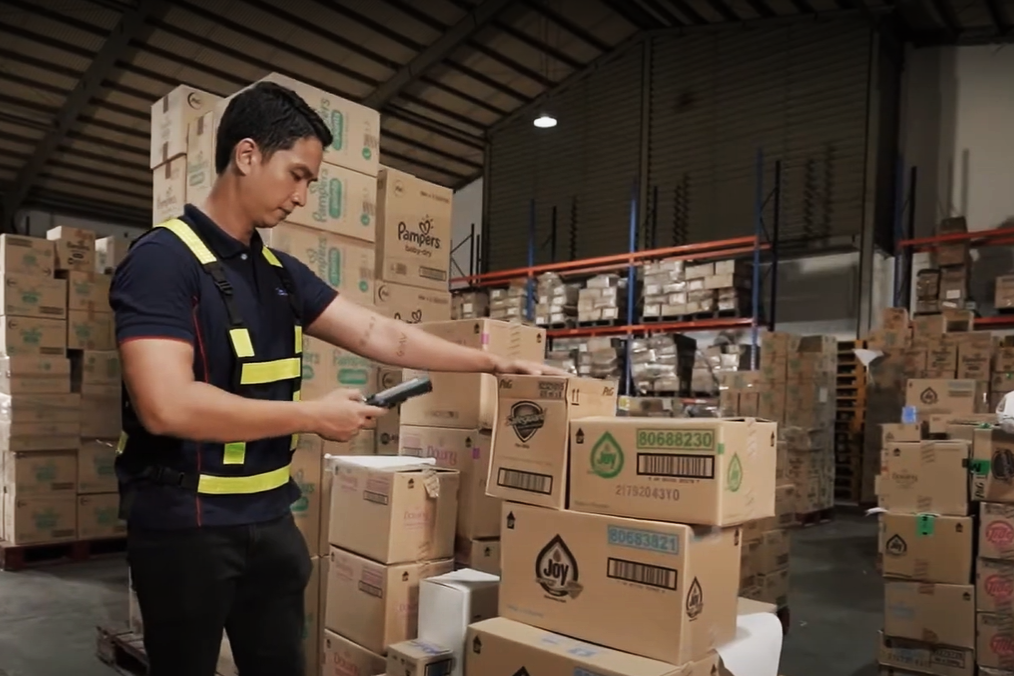
Every logistics manager and supply chain professional prefers to dispatch fully loaded trucks.
Yet some businesses send out trucks with less-than-ideal loads due to varying customer demands, production schedules, and unforeseen circumstances.
Unfortunately, dispatching partially filled truckloads results in higher transportation costs, posing a significant challenge for companies, particularly small businesses, to achieve profitability. These businesses often struggle to maintain competitive pricing and sustain operations due to their limited resources and capabilities.
Business owners and logistics managers should thus explore alternatives to dispatching partial truckloads to reduce transport costs and maximize savings. FAST Logistics Group, the Philippines’ leading provider of end-to-end logistics solutions, offers practical and cost-effective solutions to address the challenges of having partially filled trucks.
Money-Saving Delivery Tips for Businesses with Partial Truckloads
Companies can save more money despite having partial truckload by employing these strategies.
Optimize Delivery Routes
One of the simplest yet most effective ways to save money on transportation is by taking advantage of optimized delivery routes. These involve analyzing traffic patterns, identifying the most efficient paths between multiple stops, and minimizing mileage and time spent on the road.
Businesses can save money by optimizing delivery routes primarily because it reduces fuel consumption, vehicle wear and tear, and labor costs associated with longer travel times. This efficiency also improves customer experience through faster and more reliable deliveries. Moreover, trucks running on optimized routes can respond well to last-minute changes or emergencies.
Modern route optimization tools such as Transport Management Systems and software solutions utilize artificial intelligence and machine learning. These systems gather and analyze key factors such as real-time traffic data, weather conditions, delivery windows, and geographical locations to determine the most efficient delivery routes possible.
FAST utilizes a Transport Management System to enhance route efficiency and enable immediate decision-making, leading to cost reduction and swift resolution of potential disruptions. The system also provides truck drivers with real-time updates, empowering them to stay informed about hazards and other crucial information while in transit.
Invest in Load Optimization Software
Businesses handling partial truckload shipments can greatly benefit from investing in load optimization software. It helps supply chain professionals efficiently consolidate and arrange shipments based on size and weight distribution to maximize available truck space. With load optimization software, fewer trucks are needed to transport the same volume of goods.
For companies handling partial truckloads, this software ensures that each truck is utilized to full capacity, minimizing the cost per mile and improving overall logistics cost-effectiveness. Load optimization software also helps businesses streamline transport operations, reduce errors, and ensure on-time delivery. Furthermore, companies can leverage real-time data and analytics provided by the software to make informed decisions about load consolidation, resource allocation, and route planning.
Businesses can adopt load optimization software by integrating it into their existing logistics management systems and processes. Logistics personnel should be trained to use the software effectively and incorporate it into daily operations to maximize its benefits.
FAST employs the TMS AI Planner with advanced AI algorithms to optimize shipment allocation, route planning, and delivery schedules. With real-time updates on traffic conditions and delivery time windows, customers can ensure smooth operations and cost savings.
Combine Shipments with Other Businesses
Pooling resources with other businesses that dispatch partial truckloads can be a game-changer. By sharing truck space, business owners can split transportation expenses, thereby optimizing truckload efficiency and reducing their overall carbon footprint.
To make this approach work, it’s important to partner with businesses that have complementary delivery needs. For instance, if one business frequently ships electronics and another ships apparel in the same area, their combined shipments can help ensure that their trucks are operating at full capacity more often. This results in more frequent shipments but lower transportation costs, including expenditures on fuel and driver wages.
Aside from cost savings, combining shipments can also promote a more sustainable business practice. A full truckload means fewer trips, which translates to reduced carbon emissions and a smaller environmental footprint. It can be appealing to eco-conscious customers while improving a small business’s reputation in the market.
Utilize Cross-Docking Techniques
Businesses with partial truckload shipments can save money by employing cross-docking, which involves transferring goods directly from inbound to outbound trucks destined for different locations or customers with shorter storage time.
It reduces storage costs, inventory holding expenses, and extra fees associated with traditional warehousing practices. Additionally, cross-docking can accelerate delivery times, improve supply chain responsiveness, and lower transportation expenses by optimizing truck space and reducing empty return trips, all of which contribute to significant cost savings for businesses with partial truckload shipments.
To leverage cross-docking effectively, companies should identify specific points in their supply chain where cross-docking is the best solution. This involves analyzing the flow of goods and pinpointing areas where this method can reduce handling times and storage costs.
FAST offers a distinctive transport solution: pay only for the truck space you use. With our System-Guided Store Deliveries, there’s no need to cover the cost of an entire truck. We charge per cubic meter (CBM) only and ensure deliveries on fixed schedules, providing you with maximum value for your shipments.

Adopt a Just-In-Time Delivery Model
Businesses with both partial truckload shipping and full truckload shipments can save money by adopting the Just-In-Time (JIT) delivery model. This inventory strategy focuses on receiving goods only when they are needed for production or sales. It cuts inventory holding costs and improves cash flow by reducing tied-up capital in excess inventory, which is crucial for businesses managing partial truckload shipments that vary in size and frequency.
Companies can adapt the JIT delivery model by implementing robust supply chain visibility and forecasting capabilities. This involves using advanced analytics and real-time data to anticipate demand fluctuations accurately and coordinate deliveries accordingly. Companies should also forge collaborative relationships with suppliers to make this delivery model work for reliable and timely deliveries of partial truckloads.
Moreover, adopting flexible logistics strategies such as multi-stop routing and dynamic scheduling allows businesses to manage partial truckload shipments at low cost. By aligning supply chain activities closely with customer demand through JIT principles, businesses can achieve cost savings and improve service levels.
Consider Consolidation Centers
Investing in consolidation centers is crucial for businesses with partial truckload shipments as it allows for efficient aggregation of smaller shipments into larger, cost-effective loads. By centralizing the consolidation of shipments from various sources, businesses can reduce transportation costs, optimize truck space utilization, and minimize handling expenses.
This approach also streamlines logistics operations by improving inventory management, enhancing supply chain visibility, and ensuring the timely delivery of deliveries to customers. Consolidation centers also serve as hubs for value-added services. By strategically leveraging consolidation centers, businesses can achieve significant cost savings, operational efficiency, and competitive advantages in their respective markets.
If setting up a consolidation center is not feasible or the ideal solution, consider partnering with existing ones to leverage their established infrastructure and extensive capabilities. It will help businesses cut shipping costs and potentially improve delivery times, all without the need for a significant initial investment.
Encourage Driver Efficiency
Businesses with partial truckload shipments should improve driver efficiency. This helps reduce transport costs and the time drivers spend on the road. It also decreases fuel usage and cost, transit time, and insurance fees. Moreover, improved driver efficiency means less handling, fewer trips and less wear and tear on vehicles, leading to lower maintenance and repair expenses.
By maximizing the use of available truck space and improving driver efficiency, businesses can handle more shipments with the same number of drivers and vehicles. This increases overall productivity without the need for additional resources and services, thus reducing per-unit transportation costs.
Business owners can conduct regular training and monitoring among drivers. They can also leverage technology to monitor driving behavior and reward efficient drivers with incentives.
FAST utilizes AI-powered dashcams with machine learning technology across its extensive fleet. These are used to monitor driver behavior, swiftly detect and address hazards amid transit time, and ensure the fulfillment of business needs in real-time. With its tech-forward mindset, FAST pioneers innovations and solutions across all aspects of Philippine logistics.
Explore Flexible Shipping Solutions
Businesses with partial truckload shipments should look for flexible transport solutions. Some logistics providers consolidate shipments and loads it into one truck, enabling businesses to share transportation costs with other companies.
With flexible shipping, companies become more adaptable to varying shipment sizes and frequencies. It also allows them to quickly adjust their shipping plans to meet changing demand, ensuring timely deliveries and improved customer satisfaction. Ultimately, it optimizes logistics operations, resulting in fewer empty miles, fewer stops, and better route planning.
Negotiate Better Rates with Carriers
Owners of partially filled trucks can negotiate better rates with carriers by paying only for the cubic meter (CBM) used. By leveraging shipment volume and highlighting the potential for a long-term partnership, they can secure more favorable terms. Business owners should approach negotiations with a mindset of creating mutually beneficial agreements, ensuring that carriers remain motivated to provide top-notch solutions and quality service at competitive rates.
Additionally, demonstrating a consistent shipping schedule and reliable payment history can further enhance their negotiating position, encouraging carriers to prioritize their business and offer even better deals.
Partner with Logistics Providers to Save Money with Partial Truckloads
Businesses often face the challenge of not fully loading their trucks, which leads to less-than-ideal delivery frequencies and compromises both efficiency and cost savings. This can result in stockouts on store shelves, frustrating customers and damaging brand loyalty.
Overcoming the hurdles of partially filled truckloads is no simple task. However, businesses can achieve significant cost reductions and efficiency improvements through strategies like route optimization, collaboration, cross-docking, just-in-time delivery, and load optimization. Forming strategic partnerships also maximizes profits, ensuring smoother operations and increased customer satisfaction.
FAST Logistics Group, the leading provider of end-to-end logistics solutions in the Philippines, offers System-Guided Store Deliveries as a cost-effective alternative for businesses dealing with partial truckloads. We consolidate shipments into a single truck for delivery along the same route, allowing businesses to pay only per CBM. This eliminates the inefficiencies and unnecessary expenses associated with paying full truck rates for partial loads. Businesses can also save money while maintaining their delivery frequency.
With 50 years of industry expertise, FAST understands the critical importance of timely deliveries within fixed schedules. Through our System-Guided Store Deliveries, we offer an optimized network plan so there will be no need for you to book an entire truck for store deliveries.
Choose FAST for efficient, cost-saving, and reliable transport solutions to keep your business running smoothly and your customers happy. Connect with our Solutions Experts on System Guided Store Deliveries or visit http://linktr.ee/fastlogisticsph to learn more
Categories
-

FAST Ahead
Includes case studies and testimonials of our partners as well as other featurettes from industry experts
-

FAST Hacks
We simplify logistics terms and provide practical tips and solutions for the DIY in you
-

FAST Highlights
Know more about our history, various brands, achievements, and news updates
-

FAST Moments
Get to know the people of FAST, our employee programs, as well as our various ways of giving back to the community
-

FAST Solutions
Learn more about the various logistics solutions that we cater to and offer our clients, as well as tech innovations, and service facilities



